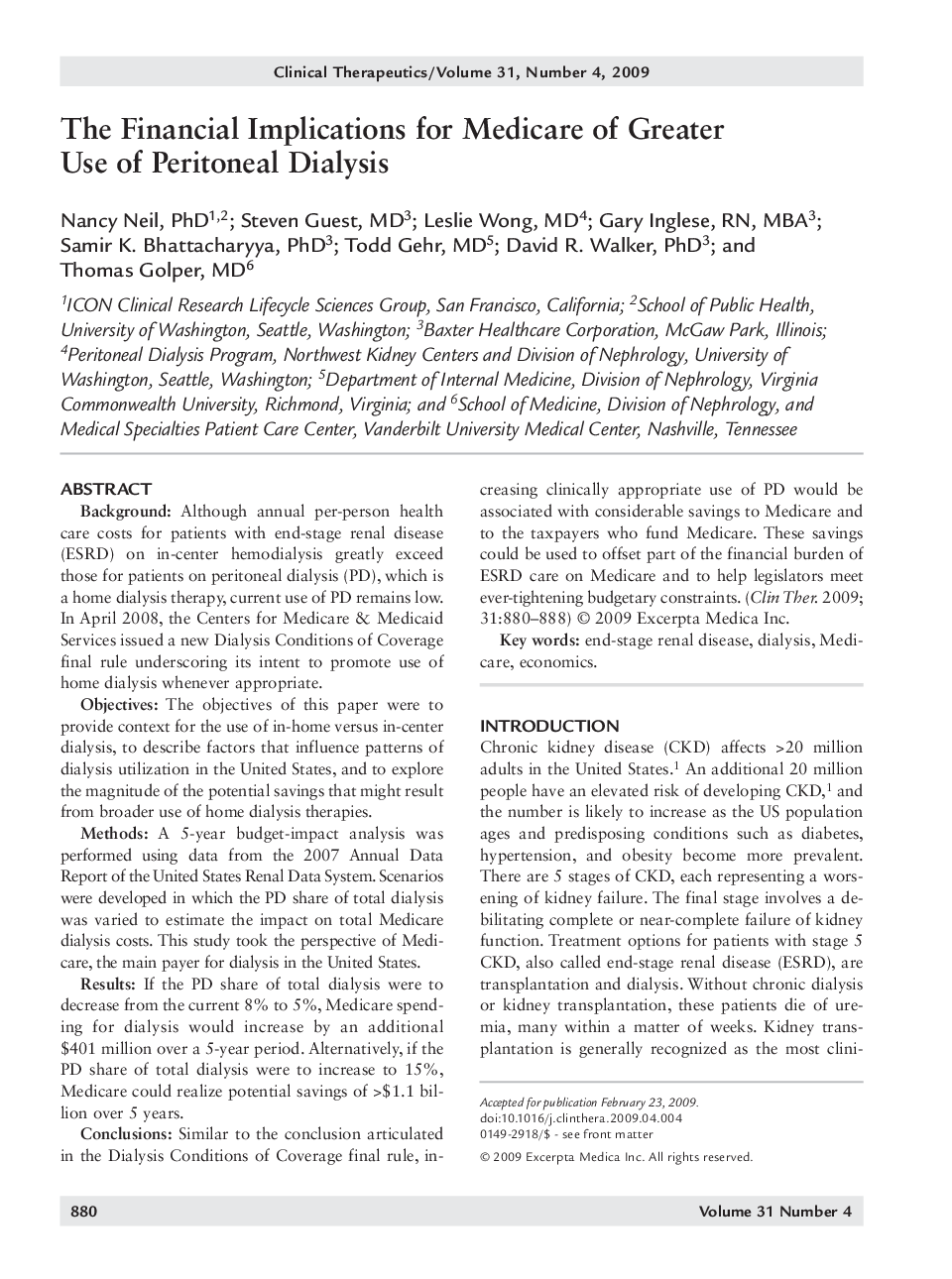| کد مقاله | کد نشریه | سال انتشار | مقاله انگلیسی | نسخه تمام متن |
|---|---|---|---|---|
| 2528592 | 1119976 | 2009 | 9 صفحه PDF | دانلود رایگان |

Background: Although annual per-person health care costs for patients with end-stage renal disease (ESRD) on in-center hemodialysis greatly exceed those for patients on peritoneal dialysis (PD), which is a home dialysis therapy, current use of PD remains low. In April 2008, the Centers for Medicare & Medicaid Services issued a new Dialysis Conditions of Coverage final rule underscoring its intent to promote use of home dialysis whenever appropriate.Objectives: The objectives of this paper were to provide context for the use of in-home versus in-center dialysis, to describe factors that influence patterns of dialysis utilization in the United States, and to explore the magnitude of the potential savings that might result from broader use of home dialysis therapies.Methods: A 5-year budget-impact analysis was performed using data from the 2007 Annual Data Report of the United States Renal Data System. Scenarios were developed in which the PD share of total dialysis was varied to estimate the impact on total Medicare dialysis costs. This study took the perspective of Medicare, the main payer for dialysis in the United States.Results: If the PD share of total dialysis were to decrease from the current 8% to 5%, Medicare spending for dialysis would increase by an additional $401 million over a 5-year period. Alternatively, if the PD share of total dialysis were to increase to 15%, Medicare could realize potential savings of >$1.1 billion over 5 years.Conclusions: Similar to the conclusion articulated in the Dialysis Conditions of Coverage final rule, increasing clinically appropriate use of PD would be associated with considerable savings to Medicare and to the taxpayers who fund Medicare. These savings could be used to offset part of the financial burden of ESRD care on Medicare and to help legislators meet ever-tightening budgetary constraints.
Journal: Clinical Therapeutics - Volume 31, Issue 4, April 2009, Pages 880-888